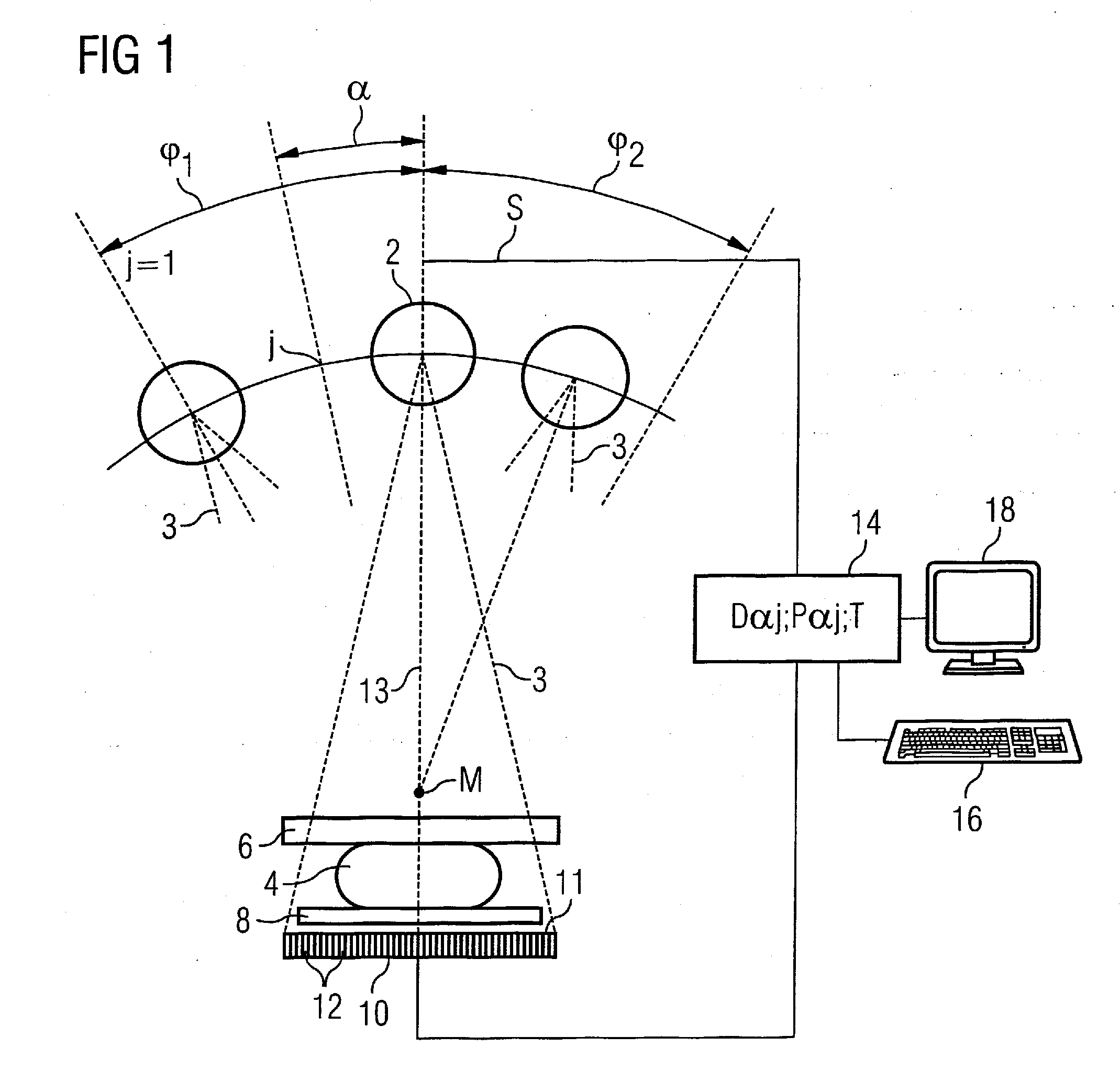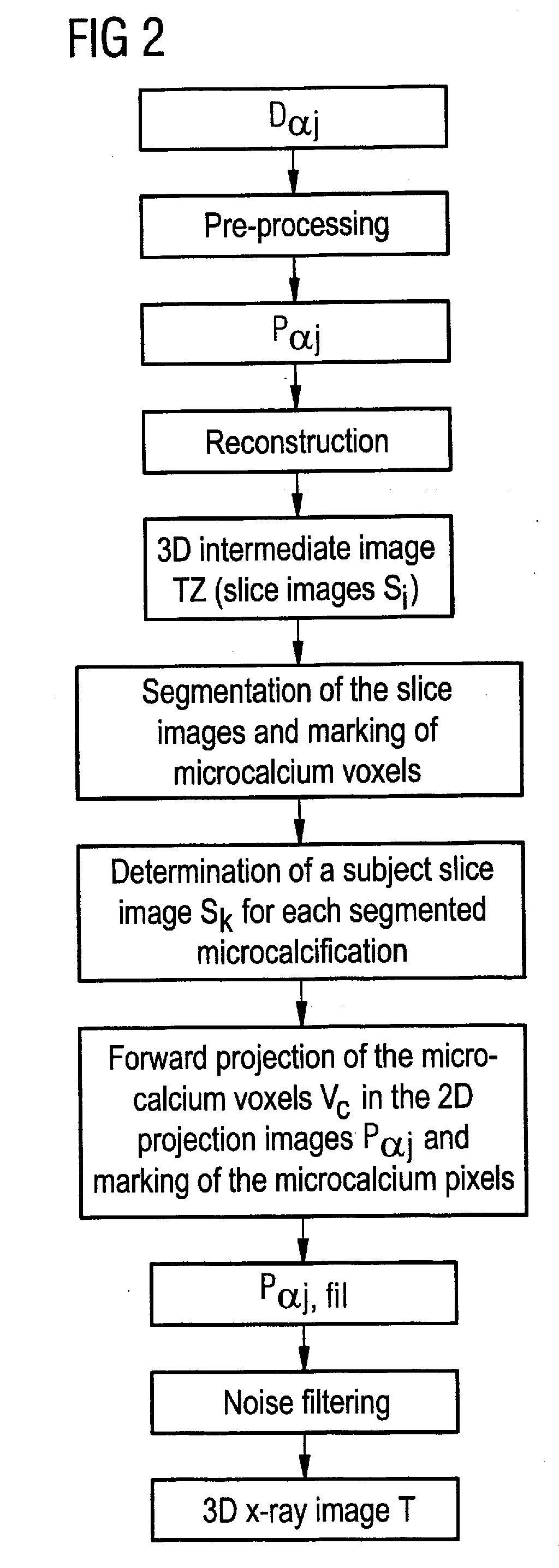Tomosynthetic image reconstruction method and apparatus
a reconstruction method and image technology, applied in the field of tomosynthetic image reconstruction method, can solve the problems of complicated detection ability of such tumors and noisy individual 2d projection images
- Summary
- Abstract
- Description
- Claims
- Application Information
AI Technical Summary
Benefits of technology
Problems solved by technology
Method used
Image
Examples
Embodiment Construction
[0023]According to FIG. 1, the device (a mammography apparatus in the exemplary embodiment) comprises an x-ray tube 2 to generate x-ray beams 3 that pass through an examination subject 4. The examination subject 4 is a female breast that is held between a compression plate 6 and a support plate 8. The x-rays 3 passing through the examination subject 4, the compression plate 6 and the support plate 8 are received by a large-surface digital x-ray detector 10 that is composed of a number of individual detectors 12 arranged in a matrix array. The acquisition surface 11 of the x-ray detector 10 is parallel to the compression plates 6, 8.
[0024]The x-ray tube 2 is mounted such that it can varied in terms of location in a limited region relative to the examination subject and, for example, can be pivoted into different angle positions j=1 . . . n in a limited angle range φ1, φ2 around an axis M perpendicular to the plane of the drawing, such that 2D projection data sets Dαj for different pr...
PUM
 Login to View More
Login to View More Abstract
Description
Claims
Application Information
 Login to View More
Login to View More - R&D
- Intellectual Property
- Life Sciences
- Materials
- Tech Scout
- Unparalleled Data Quality
- Higher Quality Content
- 60% Fewer Hallucinations
Browse by: Latest US Patents, China's latest patents, Technical Efficacy Thesaurus, Application Domain, Technology Topic, Popular Technical Reports.
© 2025 PatSnap. All rights reserved.Legal|Privacy policy|Modern Slavery Act Transparency Statement|Sitemap|About US| Contact US: help@patsnap.com



